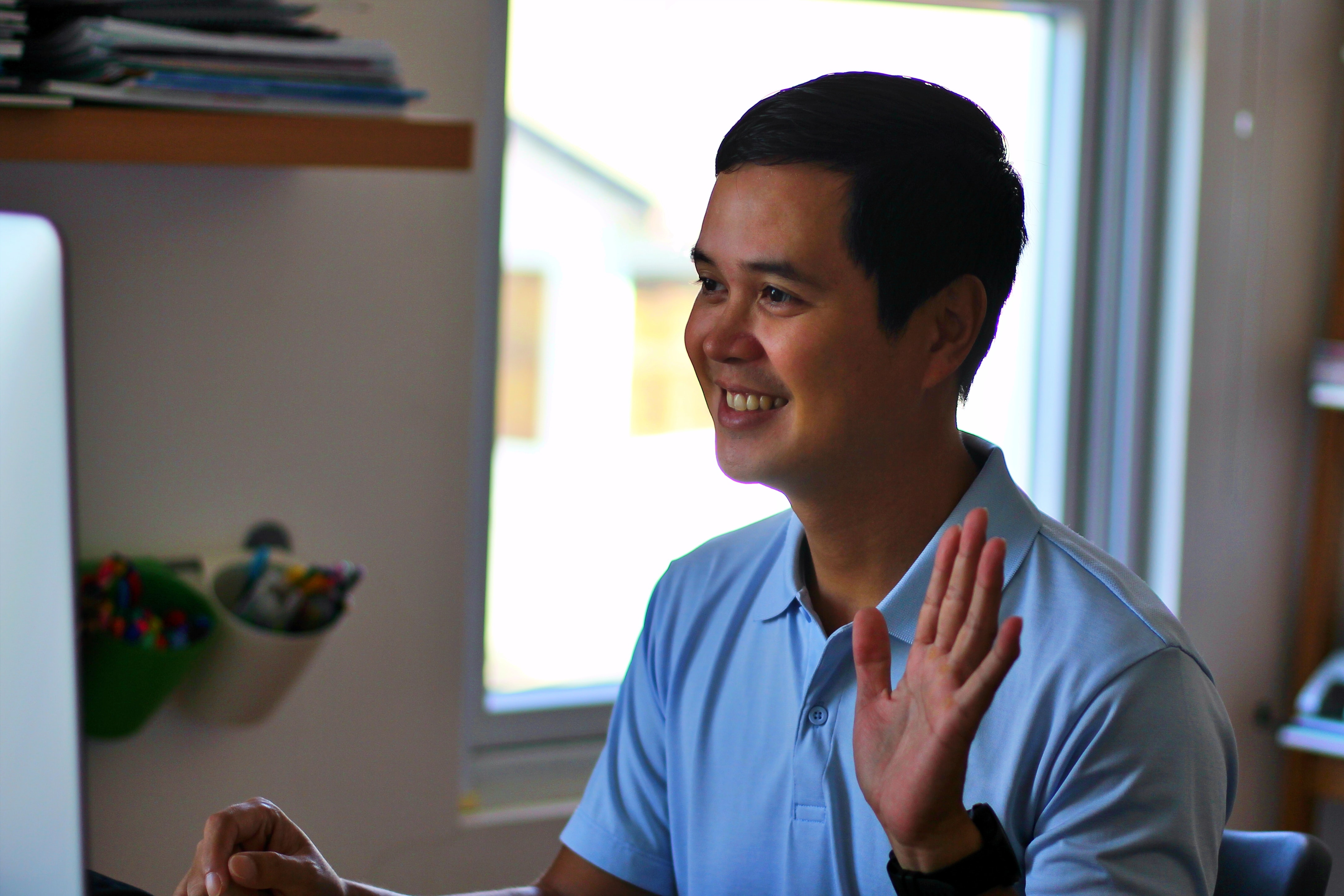Jennilyn Salvador (JS) has been working as a talent operations and corporate communications consultant for the past 14 years with companies in Malaysia, South Korea, Australia, and the United States. She has worked with teams on different projects, across multiple time zones, and understands how remote work can fluctuate from synchronous to asynchronous collaboration.
In this article, she shares her experience with The Nagaoka Review (NR) on how remote teams successfully collaborate and how to spot and retain talent that are ‘remote work ready.’
Jennilyn Salvador has worked as a talent operations and corporate communications consultant for more than 10 years.
NR: What trends do you see shaping talent acquisition today?
JS: In light of the ongoing corona virus crisis worldwide and the emphasis on safety of candidates and employees, remote online recruitment is becoming more and more feasible. Companies have deployed online communication tools such as Zoom, Skype, GoToMeetings, and file-sharing tools to facilitate the process of meeting, selecting and scrutinizing candidates.
The nature of work is changing and we are rethinking and reshaping the concept of remote more and more.
I believe remote work will be pervasive not only in talent acquisition but also even in other parts of the organizational structure for many companies. In lieu of this, companies should be well prepared to have a system, technology, structure, and workflow ready for remote teams; there’s no need to wait for another crisis to prepare.
And for jobseekers, they should prepare and train how they can effectively engage with their recruiters or hiring managers virtually.
NR: You mentioned effective engagement, what does that look like and how can jobseekers use that in a pandemic job market?
JS: Finding a job in the midst of this pandemic can be challenging as some companies have gone from 110 miles in their hiring process to zero. But that is not all companies. There are still sunshine industries during a pandemic that has continued hiring such as technology, shipping and delivery, e-commerce, etc.
My advice is simple: stay connected.
Reach out to former colleagues, follow companies on LinkedIn, network with graduates from your university, or connect with recruiters and hopefully set up remote meetings with them are various ways to do so. Let us also not forget that we can use this time to expand laterally by learning new skills which could be integrated in your narrative once that interview comes in.
And when interviews happen, always remember that the successful ones put in the legwork and consistently put their best foot forward throughout the process: from research, application, actual interview, after the interview, and up to the job offer itself.
There’s a saying that ‘if you fail to prepare, you prepare to fail.’
It helps to read about the company you’re going to have an interview with, what the key businesses are, who the customers are, and what the job description is. Applicants research the company well and they do this from a variety of sources: press releases, information on company websites, updates on LinkedIn, and Glassdoor reviews.
The ones who put their best put forward, though, do further due diligence. They interview current and previous employees and they also ask recruiters about the more inquisitive questions such as why the role is open, how desperate the company is in filling the role, and what the team culture is like.
NR: What are the signals of a potentially strong candidate?
KS: Those who know when to bring their skillsets, behaviors, and career aspirations in the discussion and how each of them best contribute to the job being applied for.
I also pay attention to applicants and their usage of the pronouns “I” and “we” in their answers. Our natural tendency is to speak about ourselves, our skills and accomplishments through the “I” pronoun and that is understandable as it shows how you can create positive impact to the organization. But organizations these days pay attention to teamwork, collaboration, and agility and they want to see how much of a team member you can be.
My personal advice is to balance both. And you can do this by saying what your team accomplished and what your role in that success was.
Also, take some time to practice. Find a mentor, a friend, or an ex-colleague who can act as your coach and can pay attention to your language, your posture, the rate of your speech, your eye contact, your breathing, and how you come across virtually. The challenge is to look confident, relaxed and authentic.
And of course, this being an online interview, make sure you check your PC and Internet connection well ahead of the scheduled appointment, and have a backup plan in case something goes wrong (for example, having an extra pocket Wi-Fi in the event your main router doesn’t work).
NR: You have worked with remote teams all over the globe. For jobseekers who might be getting into roles with remote functions, what values are important to highlight during interviews?
JS: Whether the workplace is in a conventional office setting or is done remotely, values like professionalism, respect, collaboration, and willingness to learn are important attributes to communicate.
Another thing that’s very important in working remotely is having the ability to deliver results and your reliability to consistently deliver those results. If, however, your project is part of a bigger team project, it is also very important to highlight that you are highly collaborative and can work on setting a regular schedule to meet and work with your team.
NR: But companies are still reluctant to embrace remote work because of questions on measuring productivity. How did that work out for you in your previous experience?
JS: I agree that one of the biggest challenges in remote work as I have seen in the past is how productivity can be measured remotely. Given that face-to-face interaction is missing, this can affect how we supervise our employees and the speed on how employees obtain information related to their work from other colleagues.
But we are very fortunate today because there are many platforms that are designed for communication, collaboration, social interaction, and project management of remote teams. So the most straightforward way for an organization to enable collaboration is to make sure everyone’s on board with these platforms. Email and phone have to be augmented with other technologies such as video conferencing tools that provide a richer experience where face-to-face and visual cues are present.
”Moving forward, these platforms should be part of the organization's work culture. Ongoing trainings must be put in place to ensure familiarity with these tools and how knowledge and information can be shared mutually among team members.
Jennilyn SalvadorTalent Acquisition Specialist
In terms of remote management practices, we are seeing more and more of daily scan-ups.
Teams huddle 10-15 minutes a day on the phone to inform their teams of what each member is doing, producing, and stumbling (roadblocks). These huddles have to be regular, predictable, and must be seen as safe spaces for open communication.
In terms of messaging tools like Slack, conversations can get messy and if that happens, it could be frustrating to stay on top of things.
Set up rules of engagement and groups where specific topics should be discussed so these messaging tools stay organized. For example, we created groups for #urgent, #random, #ideas, #questions, #birthdays to name a few.
And I would like to add that these two examples not only help measure productivity but they can also be used to identify talent disengagement. You’ll know your top performing employees are becoming disengaged when they show lower quality of performance than how they did before, when they don’t take the initiative to work on projects that normally would excite or challenge them, and when they’re being uncommunicative about their goals, priorities, or wants.
NR: Finally, what has your remote work experience meant to you?
JS: Because you don’t have a lot of nonverbal cues to rely on, I learned to be mindful of my communication with my colleagues and clients. I also learned to be flexible and open-minded, to have a goal but be willing to adapt and make changes as often as needed. This includes being willing to learn new skills or technologies in order to do the job well, or to respond to changes accordingly.
Photos by Headway, Dylan Ferreira, Ryan Mendoza, and Chris Montgomery on Unsplash














